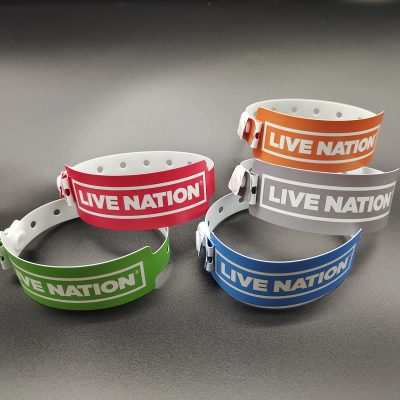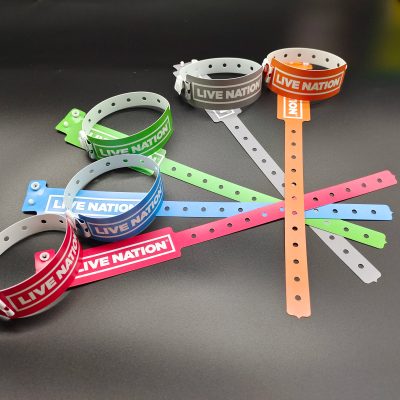Plastic wristbands have become ubiquitous in various sectors, including healthcare, events, and security. Their evolution over the years has been remarkable, adapting to technological advancements and changing needs. Here’s a look at the history and future of plastic wristband technology.
- Early Beginnings The origins of wristbands can be traced back to the mid-20th century when they were primarily used in hospitals for patient identification. These early versions were simple, often made from paper or cloth, and were manually written on to include basic patient information. While functional, they lacked durability and security features.
- Introduction of Plastic Wristbands The 1970s saw the introduction of plastic wristbands, which provided a more durable and waterproof alternative to paper and cloth. These wristbands quickly became popular in the medical field for their ability to withstand daily wear and tear, making them ideal for patient identification in hospitals.
- Expansion to Events and Venues By the 1980s and 1990s, plastic wristbands began to be used in events and entertainment venues. Their ability to be customized with different colors and designs made them perfect for crowd control and access management at concerts, festivals, and amusement parks. This period marked the beginning of wristbands as both functional tools and fashion statements.
- The Rise of Security Features As the need for security grew, plastic wristbands evolved to include tamper-evident and non-transferable features. This development was crucial for preventing fraud and ensuring that wristbands could not be easily removed and transferred. The addition of features like snap closures and adhesive seals enhanced their security applications.
- Incorporation of RFID Technology The early 2000s brought significant technological advancements with the incorporation of RFID (Radio Frequency Identification) technology into plastic wristbands. RFID-enabled wristbands allowed for contactless data transmission, revolutionizing their use in various sectors. In healthcare, they facilitated efficient patient tracking and medication administration. In events, they enabled cashless transactions and improved crowd management.
- Advancements in Customization Modern plastic wristbands can be highly customized, with options for full-color printing, unique designs, and personalized messages. This customization capability has made them popular for branding and marketing purposes. Companies and event organizers can create wristbands that reflect their brand identity and engage their audience.
- Sustainability Efforts In response to growing environmental concerns, the wristband industry has made strides toward sustainability. Eco-friendly plastic wristbands made from recycled or biodegradable materials are now available, offering a more environmentally responsible option. This shift reflects a broader trend towards sustainability in product manufacturing.
- Future Prospects: Smart Wristbands Looking ahead, the future of plastic wristband technology is set to become even more advanced with the development of smart wristbands. These wristbands will integrate features like biometric sensors, GPS tracking, and real-time data analytics. In healthcare, smart wristbands could monitor vital signs and provide real-time health data to medical professionals. At events, they could enhance security and personalize attendee experiences through data-driven insights.
- Enhanced Security Measures As technology advances, plastic wristbands will continue to improve in terms of security. Future wristbands may include advanced authentication methods such as fingerprint or facial recognition, further preventing unauthorized access and enhancing safety at events and facilities.
- Integration with IoT (Internet of Things) The integration of plastic wristbands with the Internet of Things (IoT) is another exciting prospect. IoT-enabled wristbands could connect with other smart devices and systems, creating a seamless and interconnected experience for users. For example, in a healthcare setting, wristbands could automatically update patient records and notify caregivers of any critical changes in a patient’s condition.
- Personalized Experiences The future of plastic wristbands also holds the promise of creating more personalized experiences for users. With the help of data analytics and AI, wristbands could provide customized recommendations and services based on individual preferences and behaviors. This personalization could enhance customer satisfaction and engagement in various settings, from entertainment venues to healthcare facilities.
The journey of plastic wristband technology from simple identification tools to advanced smart devices highlights their versatility and enduring relevance. As technology continues to evolve, plastic wristbands will undoubtedly play an even more significant role in various industries, offering enhanced functionality, security, and user experiences. The future of plastic wristbands is bright, promising continued innovation and adaptation to meet the changing needs of society.










